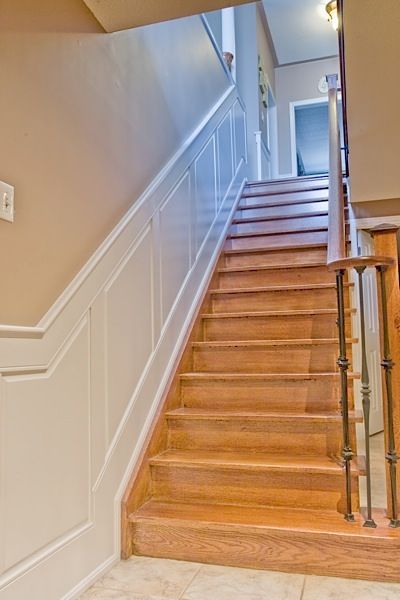The Hallway, also known as the corridor, is the space organizer of most buildings and many families. Hallways are where we enter rooms and other spaces. When you design your home, one of the most important decisions you have to make is how wide your hallway is. Hallways are often overlooked, but they play a very important role in your home.
They connect different parts of your house, making it easier for people to move. Knowing the required hallway dimensions will ensure seamless and fast access for anyone entering or leaving the room. This is particularly important for people living in apartment buildings, which require multiple people to enter and leave their rooms at the same time, especially in an emergency.
In this blog post, we will discuss the ideal width of the hallway and provide some suggestions on how to make full use of this space!
Table of Contents
Average Hallway Width
The standard width set for the hallway or hallway will give you the minimum width you can adapt to during construction. Instead, the average width of hallways and hallways will consider what is sufficient accessibility, space and accommodation. If you are considering a wider hallway for your space, then following the average width is recommended.
The average width of a hallway or corridor is usually between 42 and 48 inches, or about 107 cm to 122 cm. However, you can also choose a height of 60 to 68 inches or 152 to 173 centimeters.
A width of 60 to 68 inches will provide enough space for two people to move in any direction using the hallway. Hallways and the width of hallways are usually the standard for buildings, government offices and public spaces, but are less common in residential buildings and old reconstructed residential buildings.
How Wide Should A Hallway Be?
There is no clear answer to this question. It depends on the specific situation. In general, however, hallways should be at least three feet wide.
This will provide enough space for people to pass comfortably and avoid collisions. If there is not enough space to create a three-foot-wide hallway, the width should be increased as much as possible.
How Wide is a Hallway in a Commercial Building?

Commercial building hallways can vary in width, but the National Fire Protection Association (NFPA) recommends a hallway width of at least 36 inches.
In case of fire or other emergencies, this will provide enough space for people to move around and evacuate the building.
If your company is located in a multi-story building, it is also important to ensure that the stairwell is wide enough for people to evacuate quickly in an emergency.
If you have any questions about hallway width or other fire safety issues, please contact your local NFPA branch or a qualified fire safety professional.
How Wide is a Hallway in An Office?

Office hallways are usually four feet wide. This allows people to pass comfortably without crowding others. If the hallway is too narrow, it will be difficult for people to move around, which may cause traffic jams.
If you are designing an office, make sure there is enough space and hallways so that people can move around easily. If you plan to place large furniture or equipment in the hallway, you can also consider adding a few inches.
How Wide is a High School Hallway?

High school hallways are typically eight feet wide. In this way, students will not encounter each other when walking in the hallway, and enough space will be left for teachers. However, some schools have wider hallways, while others have narrower hallways. It all depends on the layout and design of each school.
Width of Upstairs Hallway

The hallway upstairs is six feet wide. For most people, this is a comfortable width, but if you are carrying something large, it may be a little tight. Be sure to leave enough space for yourself when you cross the hallway.
If you need more space, you can also choose to take the stairs. Stairs provide enough space for people and are also a good place to store things. Just be careful not to block the stairs when you store your belongings.
ADA Hallway Width
All spaces, especially public facilities, are built in a way that people with disabilities are everywhere. Many hallways are built as narrow as possible, so people with disabilities and wheelchair users cannot comfortably enter.
That’s why ADA standards are designed to meet these requirements and make everything available to all.
The ADA provides a minimum hallway length of 36 inches or 91 centimeters. This is also the minimum commercial hallway standard width allowed in Ada standards.
If there are objects in the hallway, especially in the turning area, the width should be expanded so that wheelchair users have space to turn to the place they want to go safely, effectively and successfully. This is also the rule for buildings and other spaces with U-shaped hallways.
Make sure you have 36 inches or 91 centimeters of space, unobstructed access, and that your building meets ADA standards.
Minimum Hallway Width
The minimum standard for hallway width is 3 feet or 36 inches. This dimension is specified in section r311.6 of the 2018 international residence code. The explanation for this is that in an emergency, this width is the minimum space for rescue workers or first responders to provide assistance to any resident.
The minimum width is enough for the wheel bed to pass through, and the rescue personnel can stand beside the wheel bed. This width also allows firefighters to carry their equipment across the hall.
If the house or building is smaller than the minimum width, it will not only violate the specifications and mandatory regulations but also make it difficult for emergency rescue personnel to find people when they need them. Spending twice as much time there means they can do less life-saving work.
Maximum Hallway Width
The building regulations stipulate that a hallway width of at least 900mm must be provided in small places. In the “pinched place”, such as when there is a radiator, this distance can be reduced to 750 mm.
How To Make a Hallway Look Wider?

You can add some mirrors to the wall to make the hallway look wider. The mirror reflects light, making the space feel bigger. You can also add plants or paintings to the wall to make the hallway look more attractive.
Choose colors that make the space brighter, and avoid dark colors that make the hallway feel smaller. If you have a choice, choose a hallway with plenty of natural light. This will also help illuminate the space.
If you can’t change the layout of the hallway, try using furniture or accessories to create the illusion of more space. For example, use a narrow table or chair against a wall to help break the space.
You can also use a mirror or a piece of art to add visual interest. With these suggestions, you can make your hallway look more spacious and attractive.
FAQs
How Wide is a Narrow Hallway?
By law, hallways must be at least 36 inches wide. However, this may seem very narrow to most inhabitants, and the generally accepted standard is 42 inches in width.
How Wide Does a Hallway Need to Be for Fire Code?
The minimum corridor width shall be as determined in Section 1005.1, but not less than 44 inches (1118 mm). For accessing and using plumbing, mechanical, or electrical systems or equipment, 24 inches (610 mm) is the only exception.
Average Hallway Width in Feet
3 feet or 36 inches is the set standard in section r311. 6 of the 2018 international residential code.
Standard Hallway Width Meters
American standards call for a minimum 36-in. -wide hallway in most circumstances. Larger scaled details are needed and can be accommodated in more spacious halls.
Conclusion
When it comes to hallways, there is no one size fits all answer. It depends on the layout of your home and the traffic you expect through the hallway. In general, however, we recommend a hallway width of at least 36 inches.
This will give you enough space to walk comfortably through the hallway, and it will also make it easier for people to navigate in the space. If your hallways are narrower than 36 inches, you can consider widening it to make it more friendly.













